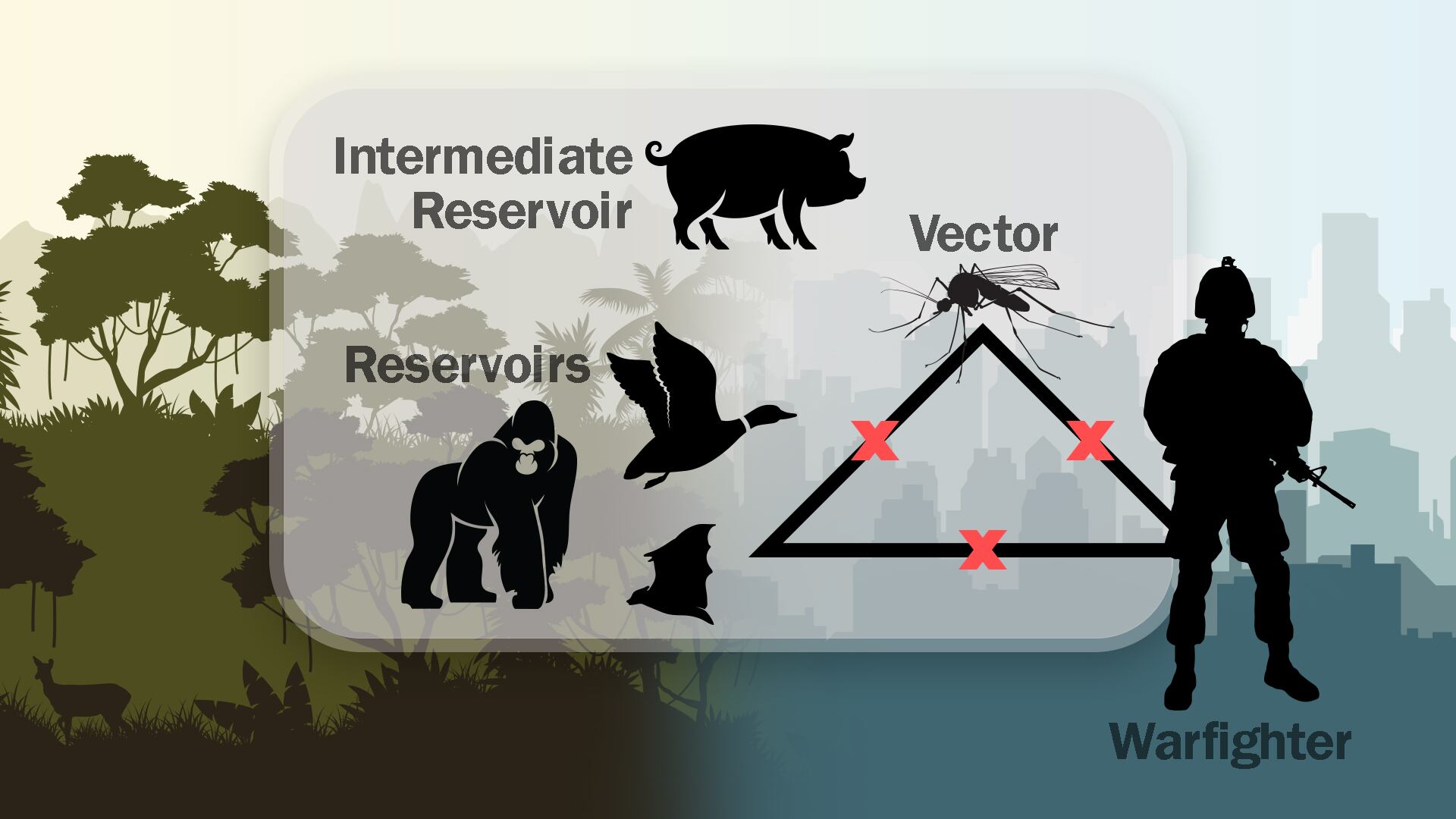Flu season has been rough this year, with cases of the virus widespread across the U.S., the Centers for Disease Control and Prevention reported.
Outbreaks are difficult enough to manage at home, in a highly monitored environment with plenty of well-trained medical specialists. But when warfighters are downrange, they often come into contact with viral outbreaks under less-than-optimal conditions.
That’s why the Defense Advanced Research Projects Agency, which engineers the future of war for the Defense Department, is looking at ways to combat pandemic diseases before they can ever leap to human populations.
“Influenza is a typical example,” Jim Gimlett, a program manager at DARPA, told Military Times. “But in recent years we’ve also seen outbreaks of Ebola, SARS, MERS, Zika, Marburg, Nipah; a whole bunch of really potentially lethal diseases that originally emerged out of animal populations and spilled over into human populations.”

Humans have been relatively lucky in avoiding a serious worldwide pandemic over the past few years, according to Gimlett.
“But any one of these diseases has that potential,” he said.
“Generally, we rely on really good forward bio-surveillance and then when one of these diseases enters human populations, we respond as best we can with countermeasures. But we're generally in a reactive mode," Gimlett said.
DARPA’s newest program, called PREventing EMerging Pathogenic Threats (PREEMPT), aims to take a more proactive approach.
The program is based on the understanding that these diseases are already present in animal reservoirs — the habitats in which the infectious microbe normally lives, grows and multiplies.
“Often it’s ducks in the case of influenza, or bats in the case of Ebola, Marburg, Nipah or SARS,” Gimlett said, referring to severe acute respiratory syndrome. “So, why not try to understand this process of viral spillover from animal reservoirs.“
Historically, the flu is one of the worst examples of viral outbreaks impacting troop readiness. In World War I, for instance, the Spanish Influenza killed more troops than battlefield injuries, Gimlett said.
“With some of these outbreaks, often our troops are among the first responders, so they’re definitely in harm’s way,” he added. “We’ve been relatively lucky in protecting our troops in recent years, but disease morbidity is a constant problem for the military.”
Gimlett said that even in modern wars there are more hospitalizations due to infections than battlefield injuries.
DARPA’s announcement seeking proposals for the PREEMPT project was released Friday, so Gimlett wanted to remain impartial to all initiatives. However, he said there are a lot of new, innovative ideas on how to address outbreaks in animal reservoirs.
Such proposals could include removing a genetic mutation that allows the virus to travel from a reservoir species, like pigs, to a vector species, like mosquitoes, and ultimately to humans.
Alternatively, an intervention could involve treating the entire animal reservoir with tools such as anti-virals and vaccines.
Other forms of intervention might involve new approaches altogether, for instance, suppressing the transmission of viruses by going after specific insects.
“All of these approaches are on the table,” Gimlett said.
Regardless of the solution chosen, it will be geared towards deployment in remote hot-spots.
The first two years of the 3½-year program will focus on putting in place the technology and knowledge needed to carry out PREEMPT’s goal.
The year and a half after that, though, will take the most promising methods and have researchers validate them in a lab setting.
“We’re really excited about pushing this new, proactive idea about hitting the viruses in the reservoir before they ever emerge into human populations in the first place. And we’re really looking forward to the ideas from the community,” Gimlett said.
Kyle Rempfer was an editor and reporter who has covered combat operations, criminal cases, foreign military assistance and training accidents. Before entering journalism, Kyle served in U.S. Air Force Special Tactics and deployed in 2014 to Paktika Province, Afghanistan, and Baghdad, Iraq.




